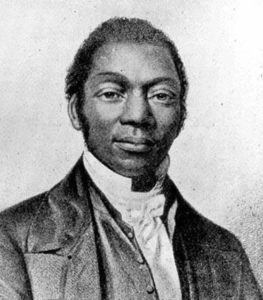
Pennington was a black orator, minister, and abolitionist, according to the African American Registry. He settled in New Haven, and audited classes at Yale Divinity School from 1834 to 1839, becoming the first black American to attend classes at Yale. He was subsequently ordained and became a teacher, abolitionist, and author. (Connecticut Historical Society)
Capital Community College recently received a $149,426 grant from the National Endowment for the Humanities to develop a curriculum, exhibit and lecture series about the history of the Talcott Street Church, the first Black house of worship in Hartford.
Jeffrey Partridge, an English professor and chairman of the Department of Humanities, is spearheading the “Black Heritage Project: Empowering Students through Black Community History.”
Partridge said the inspiration for the project was the proximity of Capital Community College to where the congregational church was first built in 1826. In that place, there is now a condemned parking garage.
“We discovered that the original location of the church was right outside the back door of our college,” Partridge said. “Our college is 71% Black and Latino. We realized this is something that should be important to what we teach and what we do in the college.”
The congregation was founded in 1819. In 1826 they built a church at the corner of Talcott and Market streets. A few years later, the congregation opened a school to teach Black children. After more than a century as a hub of the city’s Black community, Talcott Street merged in 1953 with another congregation and was renamed Faith Congregational Church. In 1954, the merged congregation moved to an already existing sanctuary on Main Street, where parishioners still meet today. The original Talcott Street church was demolished.
Partridge’s project is threefold: to create an exhibit on the history of the church, curated by Frank Mitchell, former director of Amistad Center for Art & Culture; to create a curriculum about the history of the church and its people to be used at the college and at Hartford’s Capitol Prep Magnet School; and to establish an annual Pennington Lecture on race and humanities.
The lecture series is named after the Rev. Dr. James W.C. Pennington, who fled slavery in Maryland and became a pastor in the early years of the church.
